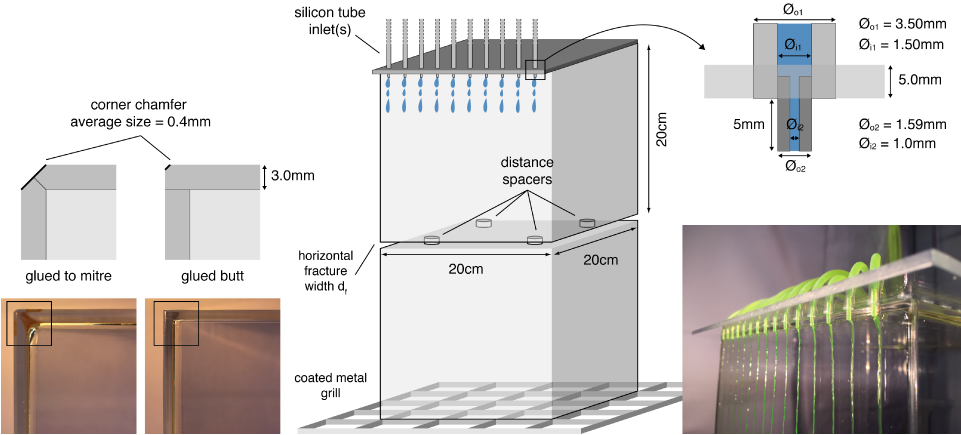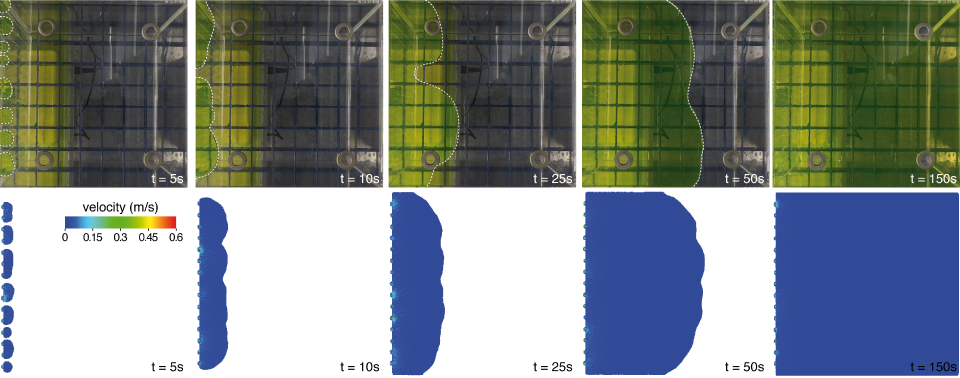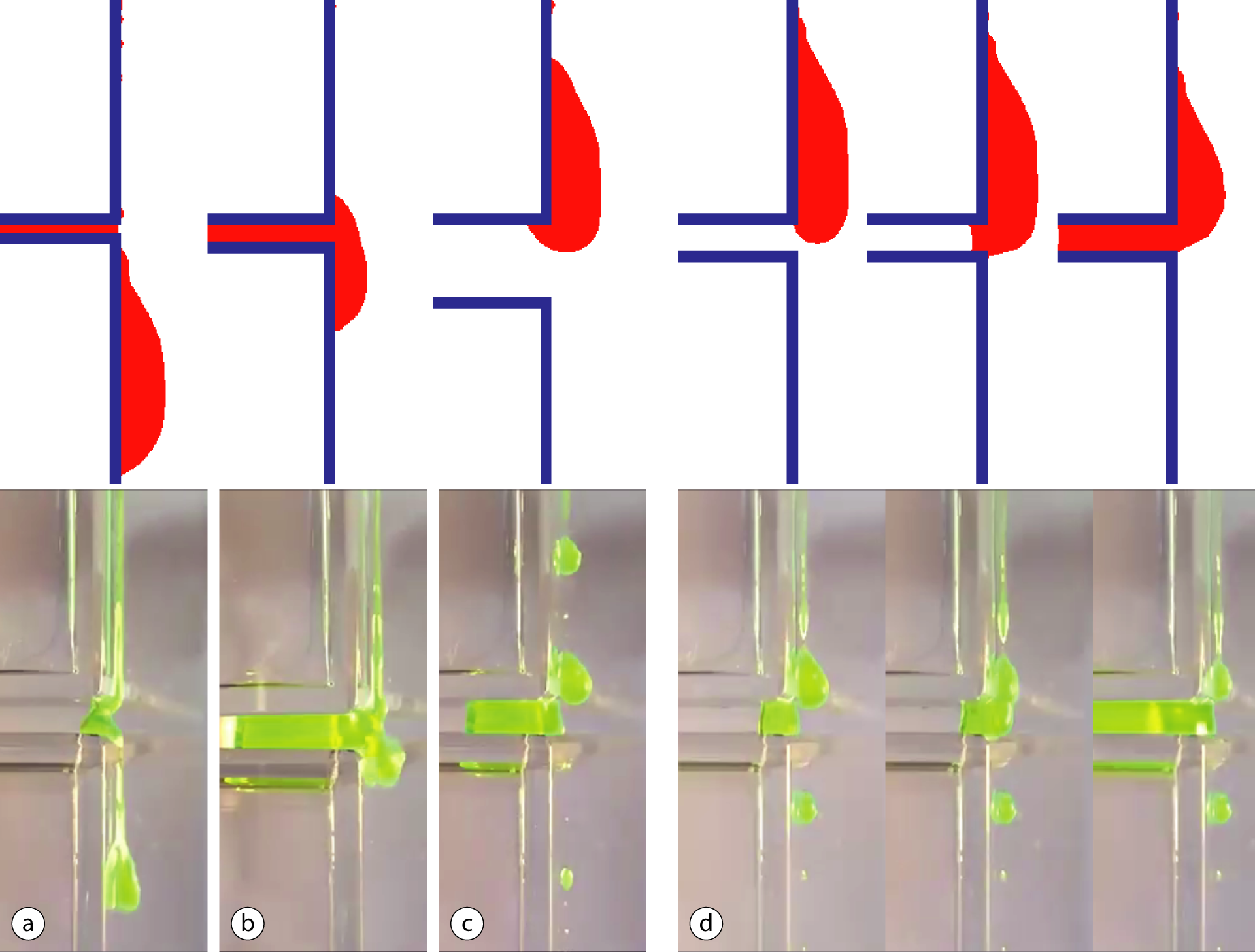Fluid Dynamical Laboratory Experiments
Rapid percolation dynamics in unsaturated fractures are nearly impossible to be studied in detail under in-situ conditions. Our experiments are aiming at a better understanding of processes contributing to the travel-time distribution, partitioning dynamics at fracture intersection and the role of flow modes on the former. Furthermore well-controlled laboratory experiments provide an essential and excellent tool to validate (our) numerical codes and possibly derive generalized analytical solutions to integrate findings into upscaled modeling approaches. The laboratory experiments of our most recent DFG project (320402845) are concerned with the interaction of porous matrix and fracture flow under non-equilibrium conditions.
Our research has shown that flow through wide aperture in the context of preferential flow dynamics is far from being fully understood. Some findings include:
- Despite the chaotic nature of flows (droplet, rivulets, films) even on rather short time scales characteristic bulk flow processes can be detected
- Averaged experimental results exhibit periods of fracture bypass and transition into Washburn-type flow before equilibrium conditions are established
- Increasing flow rates are counterintuitively resulting in a higher degree of dispersion and decrease of mean arrival times
- Partitioning dynamics at fracture intersections are strongly controlled by the prevailing (flowrate-dependent) flow mode
- Rivulets, despite their higher flowrate enhance capillary bridges at intersections and increase horizontal fracture imbibition
- Sub-vertical fractures may act as an important storage, specifically for rivulet-dominated flows
- Intersection overshoots are more likely for the case of droplet flows, which highlights the importance of boundary conditions and fracture-segment flow conditions
- Closure of the fluid front along fracture intersection is an important driver for decrease of overshoot efficiency

Analytical modeling of horizontal fracture inflow and identification of imporant processes (Kordilla et al. 2017)

Possible flow modes in unsaturated fractures (comparison of SPH model and laboratory, Kordilla et al. 2017)

Laboratory setup to study gravity-driven flow and fracture partitioning dynamics (Kordilla et al. 2017)

Horizontal fracture infiltration. Formation of straight closed fluid front from initial radial puddles (Kordilla et al. 2017)

Droplet dynamics at fracture intersections (SPH vs laboratory, Kordilla et al. 2017)